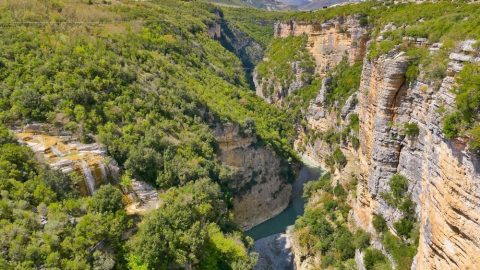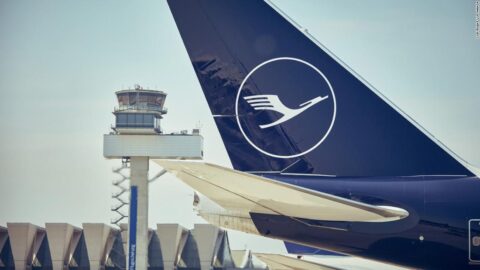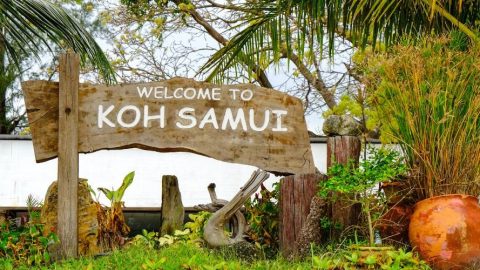(CNN) — Deep in the dense green forests of Germany’s Mittelgebirge central mountains lies a remarkable railway that has survived war, political upheaval, Cold War tension and repression, economic hardship and repeated threats of closure.
Little known outside Germany, the Harzer Schmalspurbahnen — Harz Narrow Gauge Railways, usually abbreviated to HSB — is one of the few places in the world still operating regular timetabled steam trains throughout the year.
And it’s not just for tourists. It’s an integrated part of the region’s transport network.
If the term “narrow gauge railway” conjures thoughts of a cutesy Thomas the Tank Engine style operation, think again. While its rails might be closer together than your average commuter line, this is a “proper” railway with an 140-kilometer (87-mile) network run by professionals to high standards and carrying more than a million passengers every year.
Brutish black and red steam locomotives, built in the 1950s and beautifully maintained by HSB engineers, haul trains of traditional balconied carriages packed with hikers and daytrippers into the Harz National Park.
The vast majority of those passengers take a spectacular journey up to the region’s highest peak, Brocken. It stands 1,141 meters (3,747 feet) high with a magnificent 360-degree panorama and the chance to visit a former Soviet-era eavesdropping station.
In summer, up to 11 trains a day slog up the mountain from the beautifully restored medieval town of Wernigerode to Brocken. But there’s so much more to the HSB than its showpiece mountain line.
Any visitor to the area should make time to explore the underappreciated Harzquerbahn (Trans-Harz Railway) and Selketalbahn (Selke Valley Line).
To get away from the crowds, catch the daily steam train, which winds through the forest from the country junction at Drei Annen Hohne to Nordhausen. You might even catch sight of a wild boar running off through the trees after having its lunch interrupted.
Alternatively, head for the UNESCO World Heritage town of Quedlinburg and enjoy a meandering journey through the quiet Selke Valley to Alexisbad or Harzgerode.
‘Historical quirk’

The steam railway carries passengers to the summit of Brocken peak, once the location of a Soviet-era spy station.
KLAUS-DIETMAR GABBERT/DPA/AFP via Getty Images
While the trend for narrow gauge railways across Europe has been one of contraction and closure since World War II, the HSB network is notable for having actually grown in the 21st century. In 2005, it took over a five-mile standard gauge line to Quedlinburg, which had been closed by national operator DBAG.
Public services restarted in June 2006, with at least two steam-hauled trains a day connecting with the national rail network.
Today, HSB trains run over 500,000 kilometers (311,000 miles) a year of public services, plus nostalgia specials using vintage trains.
“Its survival is an amazing historical quirk,” says Tony Streeter, HSB expert and former editor of the world’s largest steam magazine, Steam Railway.
“If East Germany had survived for much longer, then diesel locomotives would have replaced the steam. Equally, in a Western country, the railway would probably have been closed years before — just as its equivalent on the other side of the border actually was.”
First proposed as early as 1869, the railway to the Brocken summit was the subject of early environmental protests, with critics concerned that encouraging visitors to the mountain would destroy its habitats. Despite this, the line railway opened on March 27, 1899, and quickly became a major tourist attraction.
Standing high above the surrounding landscape, battered by brutal weather from all sides, Brocken has a climate more akin to a mountain twice its height, and traditionally saw snow on its upper reaches between September and May. This made it a magnet for winter sports enthusiasts once the railway gave quick and direct access to the mountain.
Ghosts in the fog

The wintry conditions on Brocken have played a role in creating myths.
Klaus-Dietmar Gabbert/DPA/AFP/Getty Images
Its dominance of the surrounding landscape has ensured Brocken’s important role in myths and legends over many centuries.
Johann Wolfgang von Goethe even featured it in his 1808 play “Faust,” where witches gather on the mountain to celebrate Walpurgis Night. Rock formations known as “The Devil’s Pulpit” and “Witches’ Altar” are said to have inspired Goethe’s work, but even now the Brocken spectre — an eerie effect caused by shadows cast on the fog — is a common phenomenon on this unusually misty mountain.
Despite the constant prospect of fog and up to 120 days a year of snow, which occasionally drifts deeper than the height of HSB trains, visitors continue to flock to the summit — at least until services were suspended during the Covid-19 pandemic. At the top, the Brockenhaus includes a hotel, restaurants, a museum and botanical garden, plus many kilometers of hiking trails.
Its exposed position and central location made it an obvious choice for a weather station and the world’s first television transmission tower, completed in 1936 in time for the first live TV broadcast of an Olympic Games (which were held in Berlin that summer).
After World War II, Brocken’s strategic location on the new divide between East Germany and West Germany was to lead to a more sinister role.
Although the mountain was partially open to tourists between 1948 and 1959, from August 1961 onward, the area was declared a military exclusion zone by the East German government and the summit plateau was sealed behind a concrete wall. The railway was retained as a supply route for troops and intelligence agents but would not see tourist traffic again until 1990.
Extensive military installations were built on and around the summit, including two powerful listening stations, codenamed Yenisei and Urian, run by Soviet military intelligence and East German state security.
Spies and skiing

Brocken’s elevated position on the border of East and West Germany made it ideal of eavesdropping.
Jens Schlueter/AFP/Getty Images
The facilities overlooked a large swath of West Germany and were able to capture much of Western Europe’s radio traffic, playing a key role in Cold War espionage and intelligence gathering activities.
On the western side, British troops and intelligence services kept an equally close eye on their neighbors, as well as taking advantage of the excellent skiing opportunities in winter.
Straddling what was, between 1949 and 1990, the internal border separating the Federal Republic of Germany and the socialist German Democratic Republic, or GDR, the Harz mountains were on the front line of the Cold War.
A wide strip of forest was cleared across the region, overlooked by armed soldiers in watchtowers and protected by high fences, razor wire, minefields and booby traps on the eastern side — a vivid physical manifestation of Winston Churchill’s metaphorical “Iron Curtain.”
Close to the hamlet of Sorge, which translates into English as “Worry,” the Harzquerbahn runs within sight of the old border. Even 30 years after Germany was reunified, the slowly disappearing gap in the forest and an abandoned watch tower provide a stark reminder of how sensitive this frontier was until 1989.
The nearby village of Elend (“Misery”) is also served by the HSB, a reminder of historic hardships endured by the local population. The Harz has a long history of mining for lead, silver, coal and other minerals. Misery was also brought to the region by the Nazi regime of 1933-45, which built the notorious Mittelbau-Dora forced labor camp near Nordhausen in 1943.
Around a third of the 60,000 inmates sent to the camp to manufacture V-1 and V-2 flying rockets toward the end of World War II died in its horrific conditions. The surviving prisoners were liberated by US troops in April 1945.
On the eastern side of the border after 1961, local residents endured draconian restrictions intended to prevent them fleeing to West Germany. Special permits were required (and often refused) to visit from other areas of the country, even to see family members.
For 45 years after World War II, the Harz Narrow Gauge Railways soldiered on in a time warp. Political restrictions and a lack of investment meant that the railway was barely modernized, and as private cars were a relative rarity in East Germany, the old trains remained important for local travel and freight.
In the late 1980s, the East’s state railway operator, Deutsche Reichsbahn, made moves to replace the steam locomotives with standard diesels rebuilt to run on the narrower tracks, but almost as soon as they were introduced, the fall of the Berlin Wall changed the world — and the role of the railway — for good.
Nostalgia trip
As early as December 1989, Brocken was reclaimed by the public during a demonstration walk, despite the gates and walls built by the Russian army to prevent access to the summit.
From 1990, the military installations were gradually run down, with the last Russian soldier leaving the Brocken in March 1994. During this time, the railway played its part in removing redundant equipment, materials and soldiers from the mountain.
However, the continued operation of the railway was far from certain until railway enthusiasts joined forces with politicians to give it another chance.
With regional backing, the track was renovated, and tourist trains proudly returned to the summit in September 1991.
Two years later, as the Deutsche Reichsbahn was being prepared for a merger with its West German counterpart, the network was privatized under the HSB brand.
Although organized as a private company, the HSB is communally owned and supported by the states of Sachsen-Anhalt and Thuringia, which subsidize the loss-making operation as a social necessity and tourist attraction.
While Brocken trains are hauled by those magnificent steam locomotives, most other HSB services are in the hands of diesel railcars, which were introduced from the early 1990s in an effort to reduce costs.
Increased car ownership and changing travel patterns have seen passenger numbers decline away from the Brocken line, with the remaining services requiring extensive public subsidy.
In recent years, that support has been under threat as running costs have risen, but a recent renegotiation has secured funding until 2035 worth around €90 million ($106 million) plus €5m a year until 2024 for infrastructure maintenance, ensuring that visitors can continue to enjoy an unforgettable steam-powered journey through the Harz region for many years to come.
Tony Streeter adds, “It has changed over the years of course, but whereas GDR features such as Trabant cars have gone, the railway is perhaps more special now than it has ever been. Its scale means it really is unique, and a remarkable reminder of times past. Time for UNESCO to take a look?”







Recent Comments